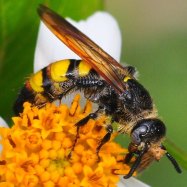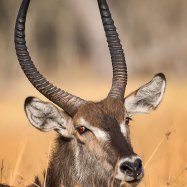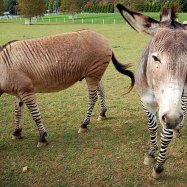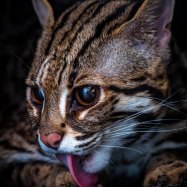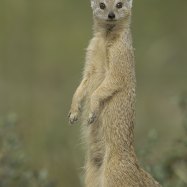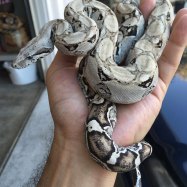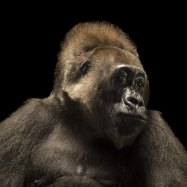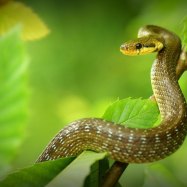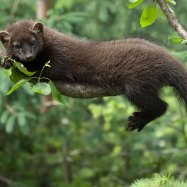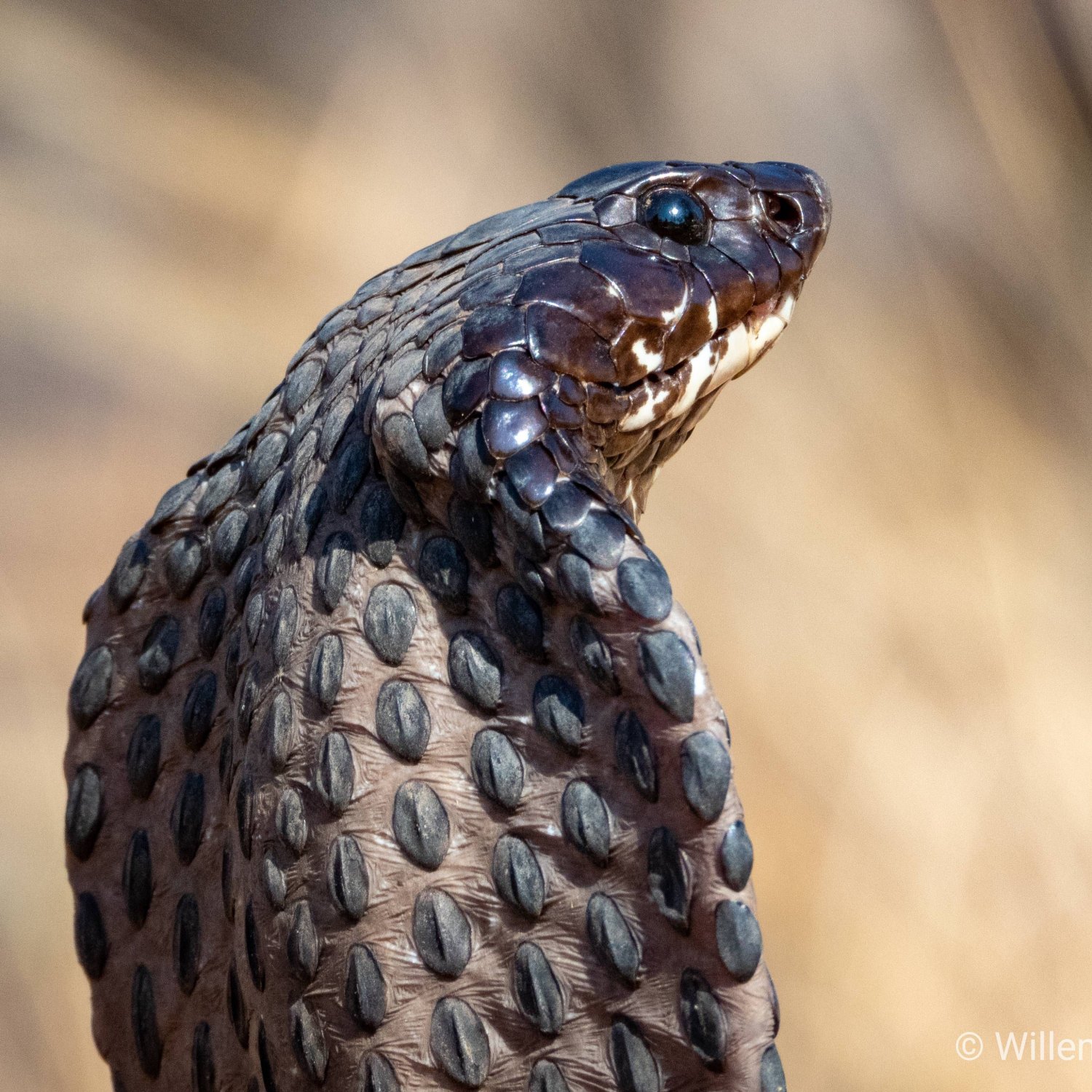
Rinkhals Snake
90 to 120 cm (35 to 47 inches)
The Rinkhals Snake is a unique and fascinating creature found in Southern Africa. With a length of 90 to 120 cm, its slender and sleek body shape allows it to move swiftly through its natural habitat. Belonging to the Elapidae family, this snake may not be as well-known as its cousins, but it is just as impressive and should be appreciated for its beauty and survival skills. #RinkhalsSnake #Elapidae #SouthernAfrica
Animal Details Summary:
Common Name: Rinkhals Snake
Kingdom: Animalia
Habitat: Marshes, wetlands, grasslands
The Mysterious and Misunderstood Rinkhals Snake: A Fascinating Creature of Southern Africa
From the swamps of South Africa emerges a rather intriguing snake that has captured the curiosity of scientists and herpetologists for centuries. Known as the Rinkhals Snake, this enigmatic creature belongs to the Elapidae family, which is renowned for its venomous species like the Cobras and Mambas. However, the Rinkhals Snake holds a unique position in this family due to its distinct physical and behavioral characteristics. In this article, we will delve into the world of this mysterious and oft-misunderstood creature, exploring its habitat, feeding methods, geographical distribution, and more, to unravel the secrets of the Rinkhals Snake Rinkhals Snake.A Closer Look at the Rinkhals Snake
Scientifically known as Hemachatus haemachatus, the Rinkhals Snake is more commonly referred to as simply "Rinkhals." Its name comes from the Afrikaans word for "ringed neck," which perfectly describes the characteristic pale or yellow rings that adorn its dark brown or black body. This unique coloration is what makes the Rinkhals stand out from other snakes in southern Africa, and it is perhaps one of its most intriguing features.In terms of taxonomy, the Rinkhals Snake belongs to the Animalia kingdom, Chordata phylum, Reptilia class, and Squamata order, like all other snakes. However, it holds a distinct position in the family Elapidae, as it is the only species in the genus Hemachatus. This fact alone makes the Rinkhals Snake an extremely interesting and rare creature to study and observe.
Habitat and Geographical Distribution
The Rinkhals Snake is native to the marshes, wetlands, and grasslands of southern Africa, particularly in South Africa, where it is commonly found. It prefers areas with high moisture levels, as it plays a significant role in its respiratory and thermoregulatory process. As a primarily terrestrial species, the Rinkhals Snake can also be found in dry, rocky areas where it hunts for prey or uses its surroundings for shelter Redstart.As a part of its habitat, the Rinkhals Snake also has a peculiar behavior that sets it apart from other snakes. It is capable of burrowing and creating complex tunnels, which it uses as its home and safe haven. This behavior is also observed in other snakes in the Elapidae family, but the Rinkhals takes it to a whole new level, creating tunnels of up to 1.5 meters in length.
The Rinkhals Snake's burrowing behavior and unique habitat requirements make it difficult to observe and study in the wild, contributing to its mysterious image.
Feeding Methods and Diet
Like all other members of the Elapidae family, the Rinkhals Snake is a carnivorous species. It feeds primarily on small mammals, such as rodents and birds, but it has also been known to prey on other snakes and small reptiles. With its slender and agile body shape, the Rinkhals is a skilled predator, capable of striking with lightning-fast speed and accuracy.However, one of the most fascinating aspects of the Rinkhals Snake's feeding method is its ability to spurt venom from its fangs. This is unique among snakes, as venom use is typically only limited to striking and injecting prey. With the Rinkhals, it can also spray its venom in a mist-like spray up to 2 meters, effectively blinding and incapacitating its victims. This behavior is what gives the Rinkhals its nickname as the "Ringhals Spitting Cobra."
This distinctive feeding method has both intrigued and alarmed scientists, as it is a rare phenomenon among venomous snakes. However, it has also contributed to the Rinkhals Snake's image as a dangerous and unpredictable creature.
The Rinkhals Snake in Myth and Culture
As with most animals, the Rinkhals Snake has been a part of local myths and legends in the areas where it is found. In some African cultures, it is seen as a symbol of destruction and danger, often connected to dark magic and sorcery. This is partly due to its venomous nature and the fear it instills in people, but also because of its unique spitting behavior, which may seem supernatural to some.In contrast, the Rinkhals Snake is also highly regarded in some cultures for its ability to control rodent populations, keeping disease and crop destruction at bay. Some even consider the Rinkhals as a sacred animal and a symbol of healing and protection, highlighting the diversity of beliefs and perceptions towards this creature.
Conservation of the Rinkhals Snake
Unfortunately, like many other snake species, the Rinkhals Snake is facing threats to its survival due to habitat destruction and exploitation for its skin and venom. As a result, it is listed as a species of least concern on the International Union for Conservation of Nature (IUCN) Red List. However, more research and efforts are needed to fully understand and protect this species, as its unique characteristics make it a valuable part of southern Africa's ecosystem.In Conclusion
In summary, the Rinkhals Snake is a fascinating creature that continues to intrigue researchers and captivate the public with its distinctive physical and behavioral characteristics. Its spitting ability, burrowing behavior, and ringed neck make it stand out from other snakes in the Elapidae family and contribute to its mysterious and somewhat misunderstood image. As we continue to learn more about this enigmatic creature, it is crucial to remember the importance of its conservation for the preservation of southern Africa's biodiversity. So let us appreciate the beauty and complexity of the Rinkhals Snake and continue to protect and admire this fascinating creature from afar.

Rinkhals Snake
Animal Details Rinkhals Snake - Scientific Name: Hemachatus haemachatus
- Category: Animals R
- Scientific Name: Hemachatus haemachatus
- Common Name: Rinkhals Snake
- Kingdom: Animalia
- Phylum: Chordata
- Class: Reptilia
- Order: Squamata
- Family: Elapidae
- Habitat: Marshes, wetlands, grasslands
- Feeding Method: Carnivorous
- Geographical Distribution: Southern Africa
- Country of Origin: South Africa
- Location: Southern Africa
- Animal Coloration: Black or dark brown with pale or yellowish bands or stripes
- Body Shape: Slender and sleek
- Length: 90 to 120 cm (35 to 47 inches)
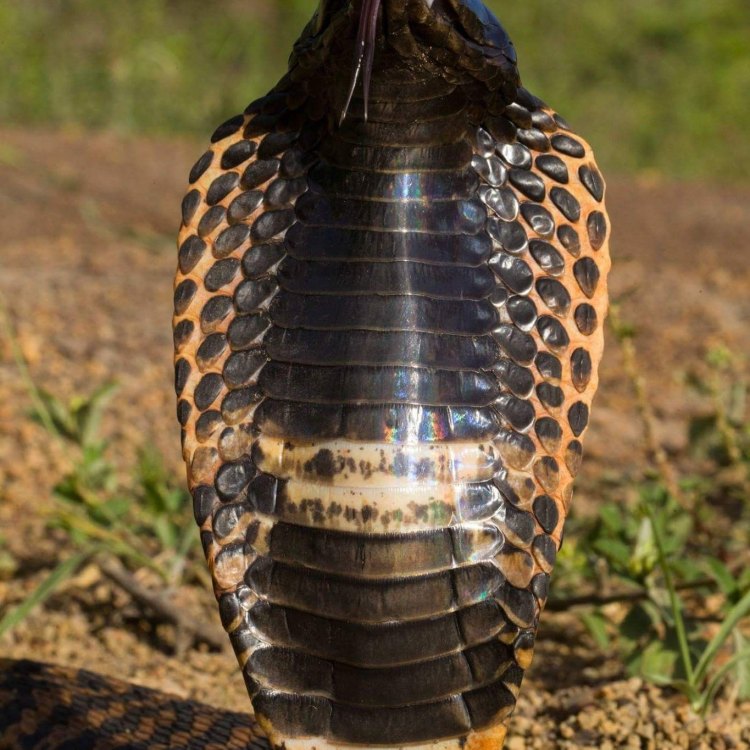
Rinkhals Snake
- Adult Size: Medium-sized
- Average Lifespan: 10 to 15 years
- Reproduction: Oviparous
- Reproductive Behavior: Mating occurs in spring and females lay around 20 to 40 eggs
- Sound or Call: Hissing and spitting when threatened
- Migration Pattern: Non-migratory
- Social Groups: Solitary
- Behavior: Nocturnal and secretive
- Threats: Habitat loss and persecution by humans
- Conservation Status: Least Concern
- Impact on Ecosystem: Controls rodent populations
- Human Use: None
- Distinctive Features: Ability to spray venom from its fangs
- Interesting Facts: The Rinkhals Snake is known for its ability to spit a venomous stream toward threats
- Predator: Large birds, mammals, and other snakes
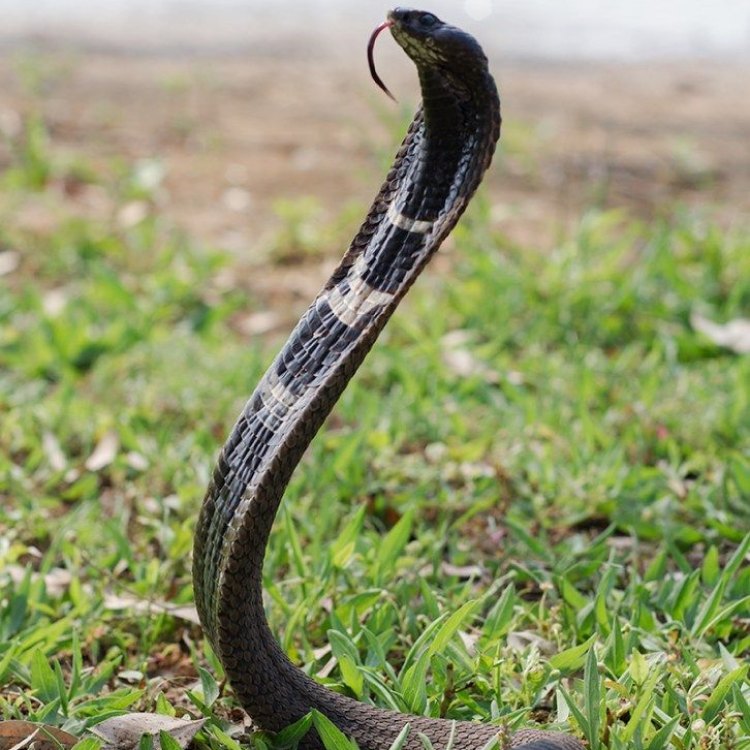
Hemachatus haemachatus
The Mysterious Rinkhals Snake: A Powerful and Deadly Hunter
In the vast and diverse world of snakes, the Rinkhals Snake may not be the most well-known or spoken about species. However, don't let its lack of fame deceive you - this medium-sized snake has some incredible abilities and characteristics that make it a unique and fascinating creature.Let's dive into the world of the Rinkhals Snake and discover its striking features, behavior, and impact on the ecosystem.
Appearance and Size
The Rinkhals Snake (Hemachatus haemachatus) is a medium-sized snake, with an average length of 100-120 cm (39-47 inches) PeaceOfAnimals.Com. Its color can vary from brown to black, with lighter stripes running down its sides. The underside of the snake is usually a creamy white or yellowish color.One of its most distinctive physical features is its hood, which can be expanded when threatened, much like that of a cobra. This intimidation tactic, combined with its ability to spit venom, makes the Rinkhals Snake a formidable predator.
Reproduction and Behavior
The Rinkhals Snake is oviparous, meaning it lays eggs rather than giving birth to live young. Mating typically occurs in the spring, and females can lay around 20 to 40 eggs at a time. These eggs take an average of 90 days to hatch, and the baby snakes emerge fully venomous and ready to hunt.The Rinkhals Snake is primarily a solitary creature, meaning it prefers to live and hunt alone, except during the mating season. It is also a nocturnal and secretive species, making it challenging to spot in the wild Rock Hyrax. You may have a better chance of coming across one during the day if you're near a source of water, such as a river or pond, as the Rinkhals Snake is an excellent swimmer.
When the Rinkhals Snake feels threatened, it will hiss and spit venom towards its attacker. This striking and intimidating behavior is used to protect itself and is not intended for hunting. However, if the venom enters the eyes, it can cause severe irritation and even temporary blindness. So, it's best to keep your distance from this unique hunter.
Migration and Social Behavior
Unlike some other snakes, the Rinkhals Snake does not have a migratory pattern. It is considered a non-migratory species, meaning it does not travel great distances or change its location based on the seasons. It typically stays in the same area throughout its life, making it easier to study and observe.As mentioned earlier, the Rinkhals Snake is largely solitary, with the exception of the mating season. It does not form social groups or hunt in packs, making it a solitary, self-sufficient hunter.
Threats and Conservation Status
The Rinkhals Snake faces multiple threats in the wild, with habitat loss and persecution by humans being the most significant dangers. Human activities such as land development and agriculture continue to shrink the available habitats for the Rinkhals Snake, reducing its population in many areas.Additionally, due to its ability to spit venom and expand its hood, the Rinkhals Snake is often seen as a threat and is killed by humans as a form of pest control. However, it is important to note that the Rinkhals Snake plays a crucial role in maintaining the balance of the ecosystem.
Impact on the Ecosystem
As previously mentioned, the Rinkhals Snake is a vital predator in its ecosystem. It mainly preys on rodents, which are known to be pests in many areas. By controlling the rodent population, the Rinkhals Snake plays a crucial role in maintaining the balance of the ecosystem and preventing diseases from spreading.In some regions, the Rinkhals Snake is also a predator of other snakes, including venomous ones. This helps keep the population of other snake species in check, preventing overcrowding and competition for food.
Human Use
Despite its deadly abilities, the Rinkhals Snake has no known human use. It is not commonly kept as a pet, and its venom is not used for medical or scientific purposes. The Rinkhals Snake is mainly left to roam and hunt in the wild, contributing to the biodiversity of its habitat.Distinctive Features
One of the most striking features of the Rinkhals Snake is its ability to spray venom from its fangs towards threats, up to a distance of two meters (6.5 feet). This impressive defense mechanism has earned it the nickname of "spitting cobra." However, despite its name and physical similarities, the Rinkhals Snake is not part of the cobra family and instead belongs to the elapid snake family.In addition to its unique defense mechanism, the Rinkhals Snake also has a keen sense of smell, allowing it to detect prey from a distance. It also has fangs that are slightly longer and more flexible than other elapid species, allowing for a greater range when spitting venom.
Interesting Facts
The Rinkhals Snake is not only known for its ability to spit venom towards threats, but it is also known for its striking and intimidating hissing sound. This sound, along with its hood expanding and venom spraying abilities, makes the Rinkhals Snake a formidable predator and one of the most recognizable snakes in its habitat.Another interesting fact about the Rinkhals Snake is that it is the only snake species that can hiss and spit simultaneously, giving it a powerful and menacing appearance when threatened. This ability, combined with its unique characteristics, makes the Rinkhals Snake a fascinating and mysterious creature to study.
Predators
Being a venomous snake, the Rinkhals Snake does not have many predators in the wild. Its main threat comes from humans, but some larger birds, mammals, and other snakes may also prey on the Rinkhals Snake. However, with its unique abilities and clever defense mechanisms, the Rinkhals Snake is a formidable opponent to any predator.In Conclusion
The Rinkhals Snake may not be the most well-known or talked about snake species, but it is undoubtedly a powerful and deadly hunter. From its unique ability to spit venom, to its distinctive hissing and hood expanding behavior, the Rinkhals Snake is a creature worth learning about and admiring.However, it is important to remember that the Rinkhals Snake, like all creatures, plays a crucial role in its ecosystem. It contributes to maintaining the balance of nature and plays an essential role in controlling rodent populations.
Therefore, it is essential to continue spreading awareness and educating others about the importance of preserving the Rinkhals Snake and its habitat. Through conservation efforts and responsible interaction with these creatures, we can ensure the survival of this incredible and mysterious species for generations to come.
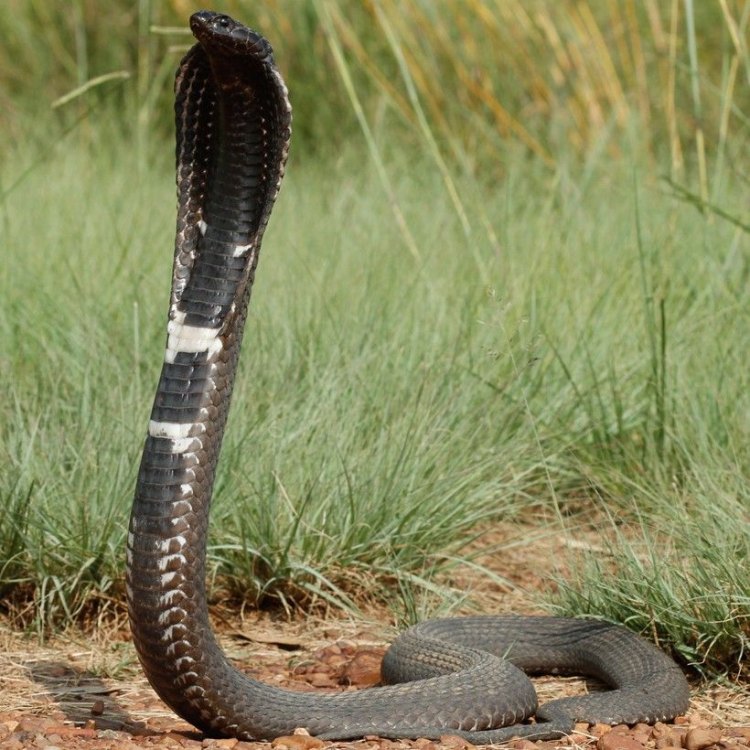
The Mysterious and Misunderstood Rinkhals Snake: A Fascinating Creature of Southern Africa
Disclaimer: The content provided is for informational purposes only. We cannot guarantee the accuracy of the information on this page 100%. All information provided here may change without prior notice.

